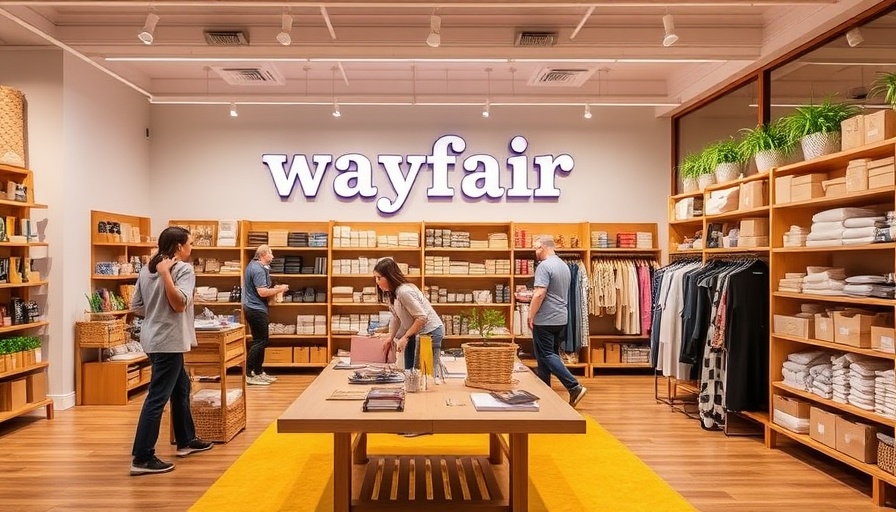
Wayfair's Strategic Physical Store: A Dual Role in Marketing and Sales
Wayfair's inaugural large-format store in Wilmette, Illinois, is more than just a retail location; it is a well-crafted marketing tool that has led to a remarkable growth in sales and brand awareness. Since its opening in May 2024, sales in the area have surged 15% higher than the company's national average. This flagship store not only caters to existing customers but also attracts many new shoppers, with more than half of the store visitors identifying as new to the Wayfair brand. According to Liza Lefkowski, Vice President of Merchandising and Stores, the store serves as a powerful medium to engage with potential customers.
The convenience and accessibility of the location, positioned off major highways, have been likened to a giant billboard, significantly enhancing brand visibility and credibility. Lefkowski notes that while traditional online shopping offers 14 million SKUs, the physical store strategically showcases 12,000 top-selling items that highlight quality and value, making the selection less overwhelming for customers.
Creating Meaningful Customer Experiences
The store’s ability to create a positive first impression is critical, especially for new customers who might have little knowledge of the brand. With a diverse range of price points and aesthetics, the store enables new shoppers to physically engage with products before making high-consideration purchases, such as kitchen cabinets or bathroom renovations.
In-Person Events: Engaging the Community
Wayfair’s strategy to host regular in-person events—like product demonstrations and floral arranging workshops—has drawn significant foot traffic, with over 75 attendees on average per event. This approach allows Wayfair to forge strong community connections, translating into further customer acquisition. Lefkowski expresses excitement over this strategy, suggesting that facilitating in-person interactions leaves a lasting imprint on shoppers, making them more likely to remember the brand.
Future Implications for Retail Strategy
Wayfair's success in Wilmette could very well influence the strategies of other retailers, especially in sectors where customers crave tactile interactions with products. The strong performance in impulse purchase categories, which have seen a 50% increase in the Chicago area compared to other regions, illustrates the effectiveness of physical presence. As more brands consider how to blend the online and offline shopping experiences, Wayfair serves as a case study for how a well-located and thoughtfully curated store can be pivotal to sales and marketing goals.
Conclusion: Lessons for Dealership Principals and GMs
For dealership principals and GMs, the insights drawn from Wayfair’s dual marketing and sales focus underscore the importance of embracing both online and offline strategies. As vehicle sales increasingly pivot to online platforms, maintaining a physical presence can create a competitive edge, offering potential customers the assurance and high-touch experience that digital alone cannot provide. Identifying ways to engage customers within your stores can lead to greater sales and customer loyalty. Therefore, those in the automotive sector should consider ways to enhance their physical spaces, perhaps by hosting training sessions, community events, or other engaging experiences that deepen customer relationships. Taking these steps could be crucial in maximizing your dealership's potential in an evolving retail landscape.
 Add Row
Add Row  Add
Add 




Write A Comment